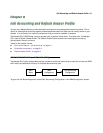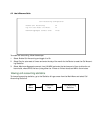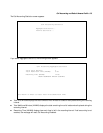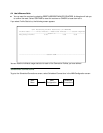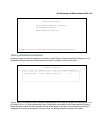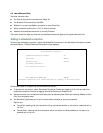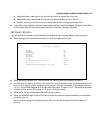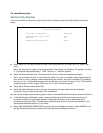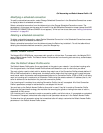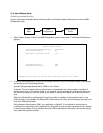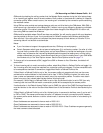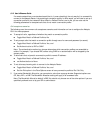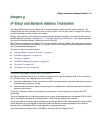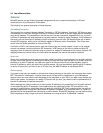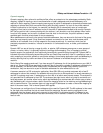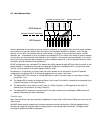
Call Accounting and Default Answer Profile 8-9
Modifying a scheduled connection
To modify a scheduled connection, select Change Scheduled Connection in the Scheduled Connections screen
to display a table of scheduled connections.
Select a scheduled connection from the table and go to the Change Scheduled Connection screen. The
parameters in this screen are the same as the ones in the Add Scheduled Connection screen (except that ADD
SCHEDULED CONNECTION and CANCEL do not appear). To find out how to set them, see “Adding a scheduled
connection” on page 8-6.
Deleting a scheduled connection
To delete a scheduled connection, select Delete Scheduled Connection in the Scheduled Connections screen
to display a table of scheduled connections.
Select a scheduled connection from the table and press the Return key to delete it. To exit the table without
deleting the selected scheduled connection, press the Escape key.
Default Answer Profile
The Netopia R310 ISDN Router can answer calls as well as initiate them. To answer calls, the Netopia R310
uses a Default Answer Profile. The Default Answer Profile controls how incoming calls are set up, authenticated,
filtered, and more.
How the Default Answer Profile works
The Default Answer Profile works like a guard booth at the gate to your network: it scrutinizes incoming calls.
Like the guard booth, the Default Answer Profile allows calls based on a set of criteria that you define.
The main criterion used to check calls is whether they match one of the Connection Profiles already defined. If
PAP or CHAP authentication is being used, the default profile checks that the incoming call’s name and pass-
word/secret match the receive name and password/secret of a Connection Profile. If PAP or CHAP is not being
used, an incoming call is matched to a Connection Profile using the remote network’s IP address (that is, the
caller is defined as the destination of a particular connection profile).
If an incoming call is matched to an existing Connection Profile, the call is accepted. All of that Connection
Profile’s parameters, except for authentication, are adopted for the call.
You could set up the Default Answer Profile to allow calls in even if they fail to match a Connection Profile.
Continuing the guard booth analogy, this would be like removing the guards or having them wave all calls in,
regardless of their source.
If an incoming call is not required to match a connection profile, and fails to do so, it is accepted as a standard
IP connection. Accepted, unmatched calls adopt the call parameter values set in the Default Answer Profile.
To determine the call parameter values that unmatched calls will adopt, customize the Default Answer Profile
parameters in the Default Answer Profile screen.



